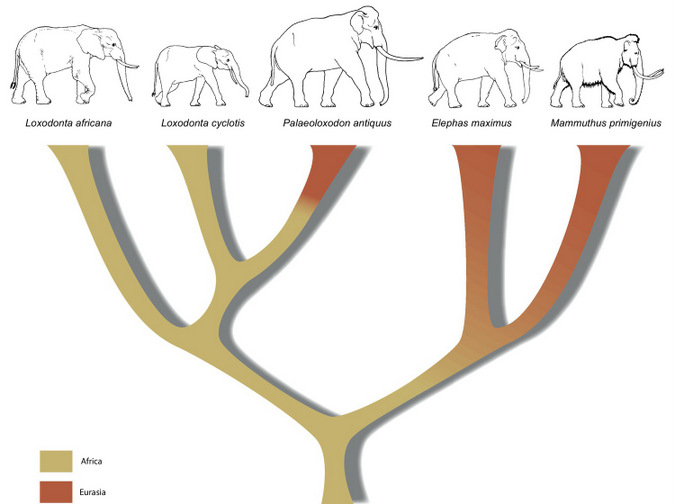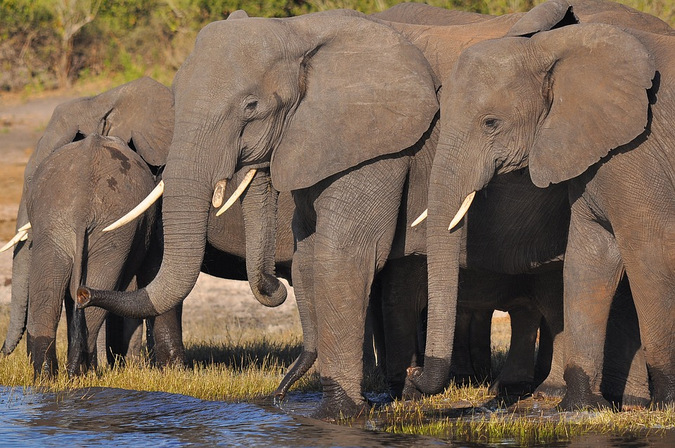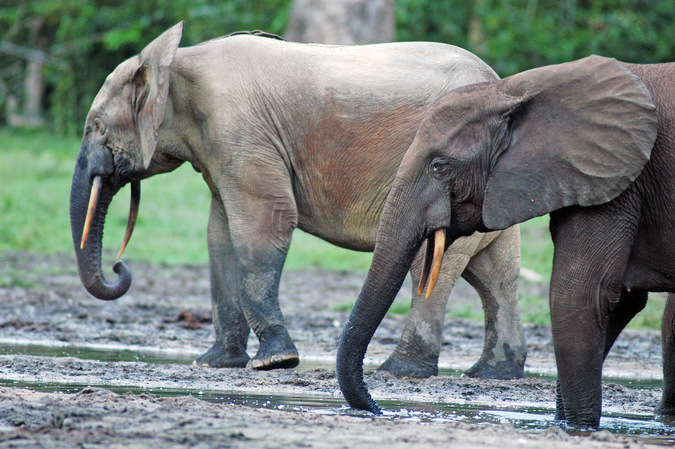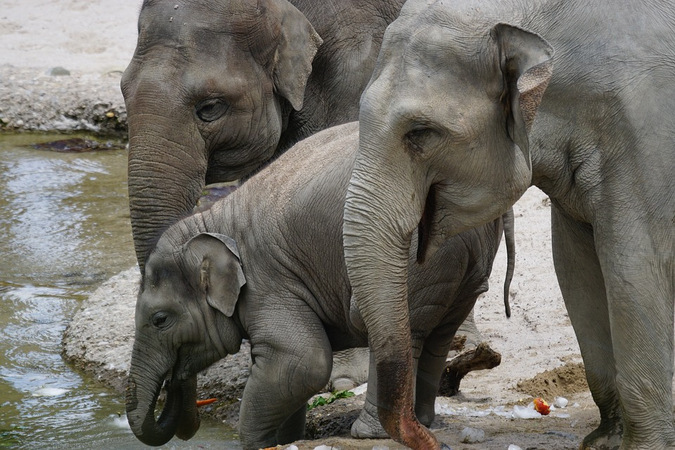
Did you know that there are three species of elephants in the world? Most only know of two: the African savannah elephant, also known as the African bush elephant (Loxodonta africana) and the Asian elephant (Elephas maximus). However, in 2010 a detailed genetic study confirmed that there is a third distinct species: the African forest elephant (Loxodonta cyclotis) – only found in the rainforests of Central and West Africa.
Further research has shown that African forest elephants are more closely related to a now-extinct ancestor than they are to their savannah relatives.

All three may look the same from afar, but on closer inspection, there are quite several differences between the species.
Join us as we take a look at the main differences between the African, Asian and forest elephant:

Size
The savannah elephant is the largest of the three species – also the largest living terrestrial animal in the world – with bulls growing up to over 3 metres in height and weighing up to 8,000 kg. On average, Asian elephant bulls can reach about 2.75 metres, weighing up to 5,500 kg, while forest elephant bulls (the smallest of the three) rarely exceed 2.5 metres and weigh around 2,700 kg.

Ears
Savannah elephants’ ears look like the shape of the African continent, and when compared to the other two species are much bigger and reach up and over the neck, which does not occur in Asian elephants.
Forest elephants’ ears are more oval-shaped, while the Asian are shaped like India and are more rounded on top and flat along the bottom when compared to the savannah elephant.

Head shape
Savannah elephants have fuller, more rounded heads. They have a single dome head, whereas Asian elephants have a twin-domed head, which means there’s a divot line running up the middle of the head.
The head of the forest elephant is similar to that of the savannah, albeit slightly smaller.

Tusks
Forest elephants have tusks that are straight and point downward, unlike the savanna elephants who have curved tusks. All savannah and forest elephants, male and female, can have tusks – whereas only some male Asian elephants have tusks. About 50% of female Asian elephants and a small percentage of males have small tusk-like teeth known as tushes (which have no pulp inside).
However, it must be noted that not all male Asian elephants nor all savannah and forest elephants necessarily develop tusks.
Trunks
The tip of the trunk of the African elephant has two finger-like projections, while the Asian elephant’s trunk tip has only one.
Nails
There is even a difference between the number of nails on each of the three species feet:
• African savanna elephant: 4 nails on front feet, 3 on back feet
• African forest elephant: 5 nails on front feet, 4 on back feet
• Asian elephant: 5 nails on front feet, 4 on back feet (rarely 5)

Location
Savannah elephants are found in sub-Saharan Africa, including Kenya, Tanzania, Botswana, Zimbabwe, Namibia, South Africa and Angola.
Forest elephants are found in Central and West Africa, including Gabon, the Democratic Republic of Congo, Cameroon and Central African Republic and Côte d’Ivoire, Liberia, and Ghana.
Asian elephants are found in tropical and subtropical moist and dry broadleaf forests in India, Nepal, Bhutan, Bangladesh, Sri Lanka, Myanmar, Thailand, Laos, Cambodia, Vietnam, China, Malaysia, and Indonesia.
IUCN status
The International Union for Conservation of Nature (IUCN) recognise forest and savannah elephants as distinct species.
• African savannah elephant: ‘Vulnerable’
• Forest elephant: Classified as ‘Vulnerable’, but should be classified as ‘Endangered’ according to African Conservation Foundation
• Asian elephant: ‘Endangered’
ADDITIONAL READING
• 17 Elephant facts you need to know
• Video: How cracks in an elephant’s skin keep it cool
• Matthias Meyer et al. eLife (2017) Palaeogenomes of Eurasian straight-tusked elephants challenge the current view of elephant evolution. DOI: 10.7554/eLife.25413

To comment on this story: Login (or sign up) to our app here - it's a troll-free safe place 🙂.![]()








